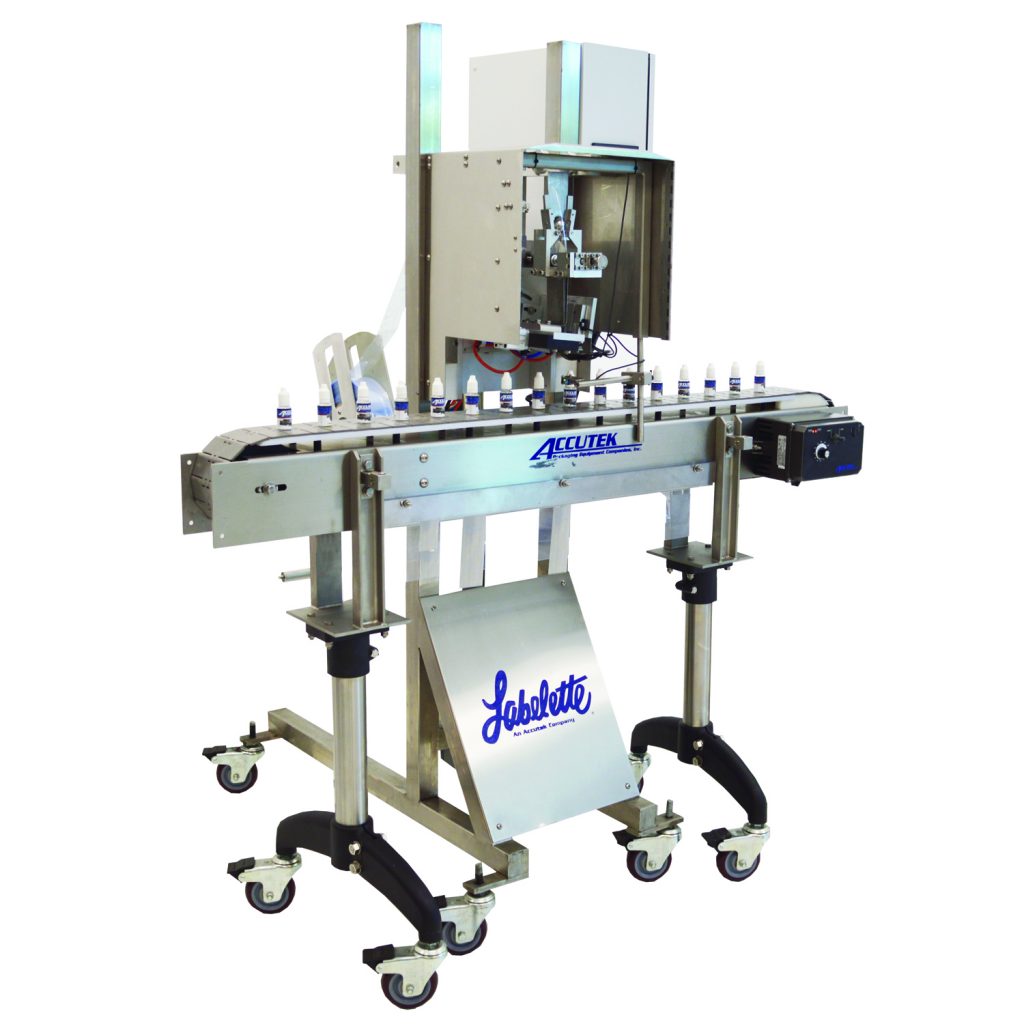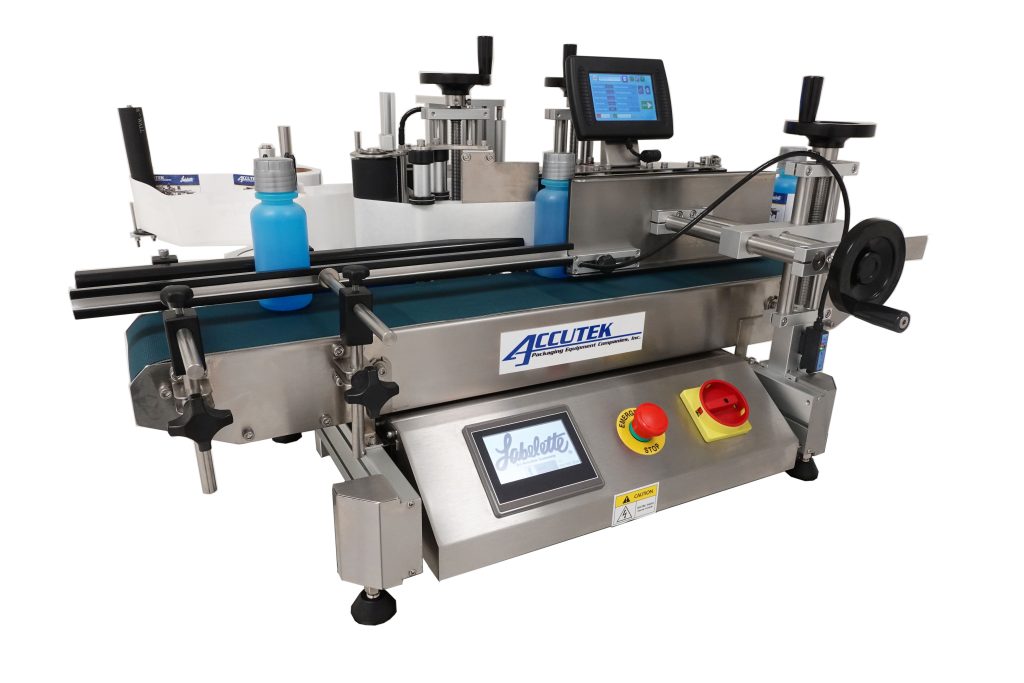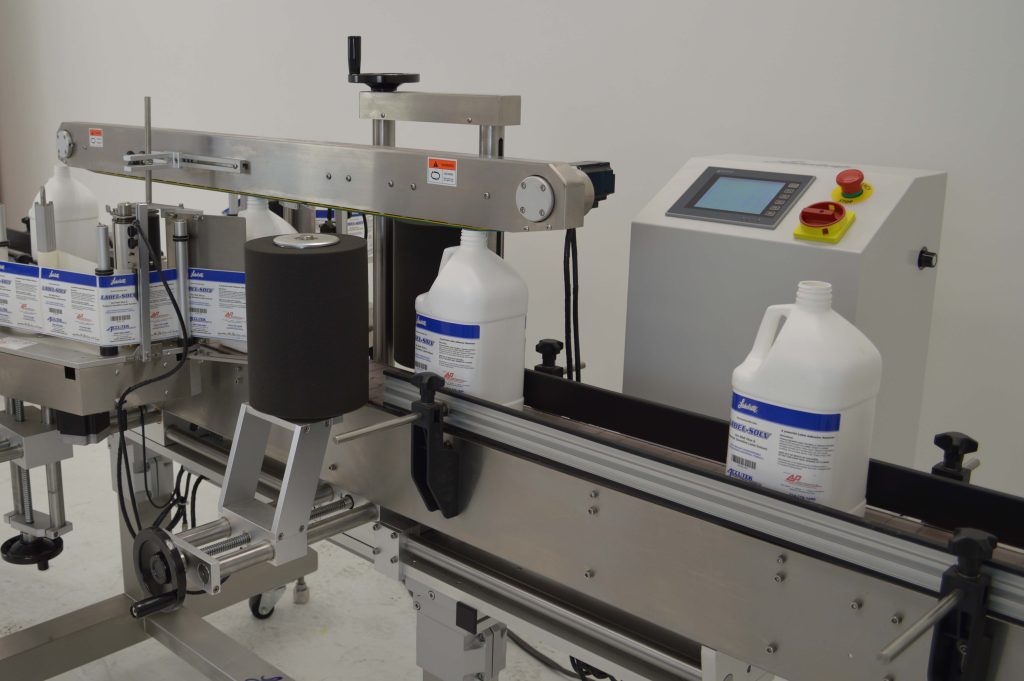Labeling Machines play a critical role in the manufacturing and packaging industry, facilitating the efficient application of labels to products. But the longer they’re used, the more likely they are to wear out and sustain damage.
But maintenance can prevent this. If you are getting a labeler, you must ensure it operates at peak performance to prolong its lifespan.
Let’s go over how to carry out routine maintenance and effective troubleshooting.
Types of Labeling Systems
Several packaging machine companies, like Accutek, manufacture various labeling machine equipment that can place labels accurately and securely on different types of containers. Three different labeling systems use cutting-edge technology to achieve this industry’s highest accuracy and speed.
1. Hot Melt Glue Labelers
Hot Melt Glue Labelers wrap a paper label around a container after applying thin stripes of melted glue to its back. Cans of paint and soup frequently have labels like this.
2. Pressure Sensitive Labelers
Pressure-sensitive labelers can apply separate labels to the front, rear, and neck of a container. They can also apply a single wrap-around label to the top and bottom of a container and to a bottle’s front, back, and neck.
Accutek offers a range of pressure-sensitive labelers, from high-speed rotary labelers to affordable desktop units.
3. Sleeve Labelers
Sleeve Labelers place a plastic sleeve label on a container that can be heated to shrink it. The label goes through a heat tunnel and takes on the container’s shape. This creates a tamper-evident seal.
Compared to other kinds of labelers, sleeve labelers can label up to 200 containers per minute faster.

Importance of Routine Maintenance
Routine maintenance is the cornerstone of optimal labeling machine performance. Regular checks and preventive measures enhance the equipment’s longevity and contribute to consistent and reliable labeling operations.
Here are some fundamental maintenance practices:
Cleaning and Lubrication
- Cleanliness is Key
Over time, dust, debris, and adhesive residues can build up and impair the machine’s functionality. Maintain the labeler by paying careful attention to the rollers, conveyors, and labeling heads. Clean out these components according to their instruction manuals.
- Lubricate Moving Parts
Ensure all moving components, including bearings and chains, are properly oiled. This lowers the possibility of malfunctions by preventing wear and tear caused by friction.
Inspection of Wear Parts
- Replace Worn-out Parts
Regularly inspect worn parts like belts, gears, and drive chains. Promptly replace any components showing signs of wear to prevent unexpected failures.
- Check Tension Levels
Maintain proper tension in belts and chains to avoid slippage or breakage, which can disrupt the labeling process.
Verification of Alignment
Ensure that labeling heads and sensors are correctly aligned. Misalignment can result in skewed labels or misapplication. Regularly verify optical sensors’ alignment to guarantee accurate label placement.
Software and Firm Updates
Keep labeling machine software and firmware up-to-date. Manufacturers release updates to address bugs, improve functionality, or introduce new features. Regularly check for updates and follow the manufacturer’s guidelines for installations.
Calibration Checks
Calibrate label sensors periodically to maintain accuracy in label detection. Incorrect sensor calibration can lead to issues like double labeling or labels being missed during the application process.
Troubleshooting Tips for Common Labeling Machine Issues
Even with routine maintenance, you still may experience occasional issues. Effective troubleshooting is essential for minimizing downtime and ensuring efficient label application.
Here are troubleshooting tips for common labeler problems:
Label Misalignment or Wrinkling
- Adjust Labeling Head Position
If labels are consistently misaligned or wrinkled, check the positioning of the labeling head. Ensure it is aligned with the product’s surface and adjust as needed.
- Examine Label Roll Tension
Incorrect label roll tension can cause misalignment. Check the tension settings and make adjustments accordingly.
Label Jams
- Inspect Label Path
Label jams often occur due to obstructions in the label path. Inspect the path for any debris or misaligned labels that may impede their smooth movement.
- Check Roller Conditions
Worn or damaged rollers can contribute to label jams. Inspect and replace rollers as needed.
Inconsistent Label Application
- Evaluate Labeling Speed
Inconsistencies in label application may arise if the labeling speed is too high for the machine to handle. Adjust the speed settings based on the machine’s capabilities.
- Review Label Placement Sensors
Malfunctioning label placement sensors can lead to inconsistent application. Check and calibrate sensors to ensure accurate label placement.
Adhesive Residue Buildup
Adhesive residue buildup on labeling heads or rollers can impede label adhesion. Regularly clean these components using manufacturer-approved cleaning agents to prevent residue accumulation.
Faulty Sensor Readings
- Inspect Sensor Alignment
Misalignment or damage to sensors can cause faulty readings. Verify the alignment and condition of sensors and make adjustments or replacements as necessary.
- Check for Interference
External factors such as ambient light or dust can interfere with sensor readings. Create a controlled environment and ensure sensors are free from obstructions.
Printer Issues for Label Information
- Verify Printer Settings
You must ensure that the printer’s settings align with label specifications. Incorrect settings may lead to distorted or misprinted labels.
- Monitor Ink and Ribbon Levels
When you run out of ink or ribbon, it can cause printing disruptions. Regularly check the ink and ribbon levels and replenish the supplies.

Best Practices for Extended Labeling Machine Longevity
- Operator Training—Provide thorough guidance and training for machine operators. A well-trained operator can identify and address issues promptly, minimizing the risk of prolonged downtime.
- Documentation and Record-keeping—Retain thorough records of all regular maintenance tasks and any troubleshooting performed. This makes it easier to track component replacements, recognize patterns, and plan maintenance.
- Spare Parts Inventory—Maintain an on-site stock of essential replacement parts. This covers parts like rollers, sensors, and belts that are frequently changed. Easy access to spare parts accelerates the prompt settlement of unforeseen problems.
- Adherence to Manufacturer Guidelines—Follow the manufacturer’s instructions for upkeep, troubleshooting, and operating parameters to the letter. When advised measures are not followed, wear may accelerate, and unexpected breakdowns may occur.
- Regular Audits and Inspections—Conduct periodic audits of the labeling process. This includes inspections of label application quality, machine settings, and overall system integrity. Address any anomalies promptly.
- Environmental Considerations—Maintain a controlled environment conducive to labeler operations. Factors like temperature, humidity, and cleanliness significantly affect equipment performance.
- Continuous Improvement Initiatives—Establish feedback mechanisms where operators can provide insights into potential improvements. Continuous improvement initiatives can lead to enhanced machine efficiency and reliability.
Conclusion
To ensure the optimal performance and longevity of your labeler, consider effective maintenance and troubleshooting practices.
When you incorporate routine maintenance, address issues promptly through troubleshooting, and adopt best practices, you minimize downtime, enhance efficiency, and extend the lifespan of your labeling machi


